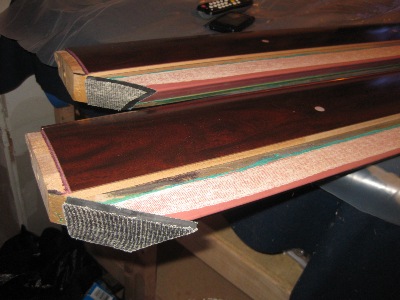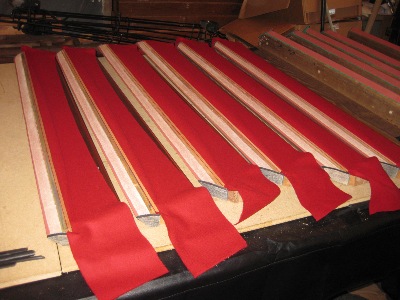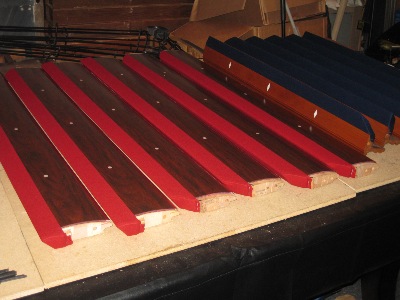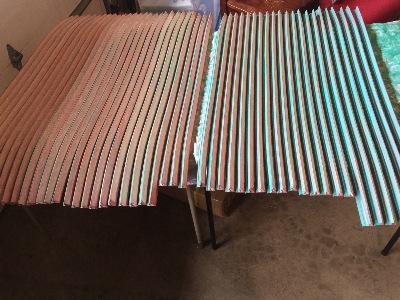

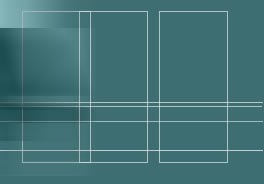



Have you ever wondered what goes on behind the scenes at Your Local Pool Table Guy's shop? Are you curious what he does with your rails when he removes them from your table and takes them away for cushion replacement? Are you interested in seeing what the "guts" of your pool table look like? I have created this section to not only inform you about what the rubber cushions on a pool table are and why it is important to change them as they go bad over time, but also to show the different processes and skill sets that go into the restoration of your pool table rails. Below is a typical weeks worth of rail cushion replacements waiting to be completed. The whole process takes place over a single weekend with rails grouped up in ususally four to eight sets to be done at one time in bulk for optimal efficiency.


Most pool tables are constructed in a way that allows them to last for a very long time when cared for and maintained properly. There are really three main components on pool tables that need to be changed out from time to time in order for them to stay in tip top condition. The pockets (leather, plastic, or rubber), the felt (fabric material on both playing surface and rails), and the rubber cushions which are the more commonly overlooked part of the pool table. When the pockets and felt go bad, you can see it because it is right out in plain sight. When the rubber cushions go bad, it is typically a slow process where you may not notice they are getting worse over time until you play on a newer table or someone you know says something about it to you while playing on your table. Rubber cushions usually last an average of 10-15 years before they start to show signs of needing to be replaced; however, certain brands have been known to go bad in significantly shorter or longer periods of time.
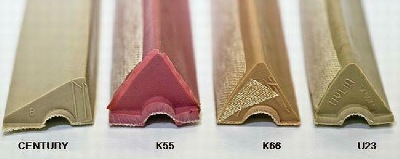
The rubber cushions, which are located under the felt section of the pool table rails, are a primarily triangular in shape when viewed from the side, and come to point where the ball is supposed to contact it and bounce off. They come in a variety of different sizes and angles depending on the pool table's brand and age, and also can vary in composition causing them to react better and/or deteriorate slower. When the rubber cushions start to go bad, they slowly begin to either stiffen & harden up to the point of crumbling and cracking, or soften making them feel more like squishy dough than rubber. In both cases, this will cause the rails to have dead spots and seriously impact the play of the table as well as the condition of the felt attached to them. The cushions can also start to separate from the wood on the rails over time, especially if the table has been use for storage or sitting on. In all cases, you never want to put new felt on or waste time and money servicing a table that has bad or detached bumpers. You will always be alerted before we begin any service if this is the case and you will be given options and pricing as needed.
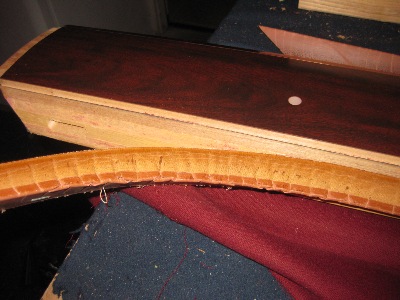
The first step in rail cushion replacement is the removal of the old rubber bumpers. This can be quite a time consuming process depending on the cushion type & condition, the original glue product used to secure the bumpers to the wood rail, and the profile of the rail itself behind the cushion. Sometimes a set of six rails from one table will take up to an hour and half just to remove the cushions and prepare the wooden rail for the new ones. Once the rails are stripped, they are ready to have the glue applied to both them and the cushions using a high quality 3M Contact Adhesive as seen below.
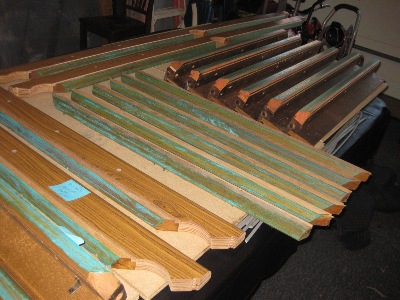
Once the contact adhesive has dried, the bond between the rubber cushion and wooden rail is carefully made by hand with the bumper set to the proper height all the way down each rail for an even, smooth transition from rail to rubber. The cushions, as you can see in the photo below, start out much longer than the rail itself. This is done so that the proper angle can be custom cut for each rail end depending on the specific profile of the individual pocket area. After the cushions are cut to shape at the pockets, the same glue process is repeated for the rail ends and the cushion facings, the pieces of rubber end caps that can also be seen with green glue on the them in the pictures below.
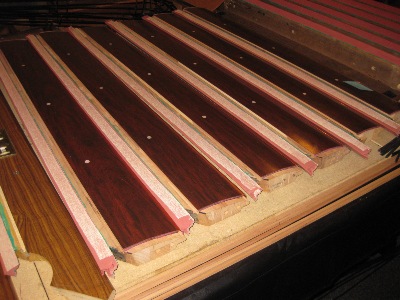
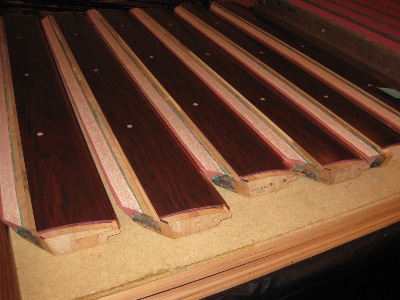
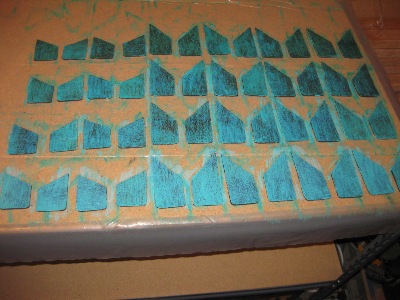
For the last steps in the restoration process, the cushion facings are applied to the rails after the glue dries and are cut down to the proper profile of the end rail and cushion. Afterwards, the featherstripping usually consisting of a long thin piece of wood, plastic, or rubber are used to "tuck" the felt in at the top face of the rail, and the felt is stretched around the bumper and stapled to the underside of the wooden rail. The finished set of rails is then returned to the customers home and reattached to the pool table at which point the installation and restoration is completed.
